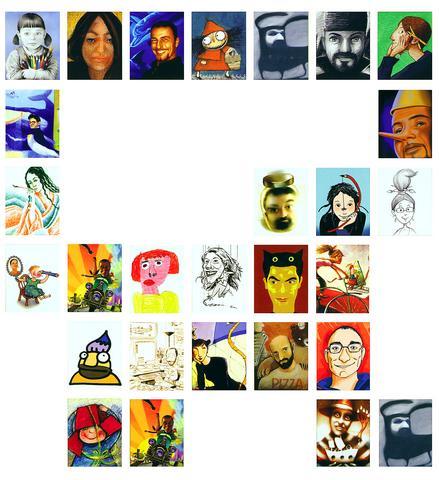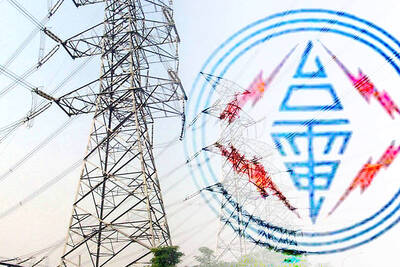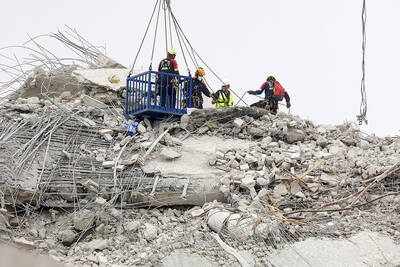The Taipei International Book Exhibition (TIBE,
Jointly organized by Cite Publishing (
Attracting publishing houses from around the world, the annual event has become Asia's largest and the world's fourth-largest international book exhibition since its inaugural show in 1987. This year a total of 925 publishing houses representing 51 countries are set to fill 2,078 booths at TWTC's I and II exhibition halls.

Although this is a slight drop in last year's record-breaking figures, which saw 925 publishing houses displaying their tomes in 2,092 booths, this year's TIBE has been touted by organizers as the most "reader friendly" in the event's history.
In contrast to previous TIBEs, where entrance to the event for the opening two days was restricted to those within the publishing industry, this year will see the entire six-day event open to the general book-reading public. The move is expected to substantially boost the number of visitors and organizers anticipate a huge turnout. They are already predicting the number of visitors will be between 250,000 and 300,000 over the six days.
"This year's TIBE is not the largest, but we do expect it to attract more visitors than ever before. There are over 2,000 stalls, many of which represent local publishing, which is a main feature of this years event," said Chairman of the TIBE Organizing Committee Jan Hung-tze (詹宏志). "There are also many special events focusing on special topics, which will bring together local and international publishing houses."
In order to appeal to the large number of visitors expected at TIBE 2004, the show has been divided into six major exhibition areas, the largest and most extensive of which is the publications area. This area includes the international exhibitors' area, where foreign exhibitors representing publishing houses from the Asia-Pacific region, Europe, the Americas and Africa will be displaying their wares.
The children's books area will see publishing houses specializing in children's and teen books. There is a general-books area, where both paper and hardback fiction and non-fiction will be available, as well as a spiritual and religious books area, which will include inspirational, philosophical and religious texts. Magazines will also be available this year and have an area of the TWTC set aside for them for first time.
As always, the comic book area is expected to prove one of the event's biggest draws. Under the auspices of the Comic Artist Labor Union in Taipei (
Large numbers of fans of cosplay will be on hand at the comic book pavilion dressed up as their favorite comic book characters.
Those feeling left out and not bedecked in costumes or toting the latest in comic book merchandise will be able stock-up on the latest in comic book chic paraphernalia at a special comic book merchandise pavilion.
While organizers are putting an emphasis on the reading public this year, publishing deals and publishing rights negotiations between local and international publishing houses remain a major part of the event.
"TIBE may have changed somewhat this year, with more focus on the reader, but we still hope that the event will bring together publishing houses from all over the world in order to sign deals and develop new contacts," said Huang Hwei-chen (黃輝珍) of the GIO.
"We hope that through the event local publishing houses will continue to develop and raise the standard of international publishing."
Along with books, there will also be a chance for visitors to catch up with the latest in Internet and digital publishing applications, as well as multimedia and e-learning material at the TIBE 2004 Digital Cultural Area.
Unlike previous years, when there was a "Country of Honor," no one country is celebrated at this year's TIBE.
There are, however, several special events and related exhibitions set to take place over the coming week focusing on Italian illustrators.
Art Design Italy: Illustrations features works by 41 Italian illustrators; Art Design: Italy showcases works by 10 Italian designers. The International Publishers and Special Book Design features works by US publishing company Chronicle Books and Corraini Editions from Italy.

A vaccine to fight dementia? It turns out there may already be one — shots that prevent painful shingles also appear to protect aging brains. A new study found shingles vaccination cut older adults’ risk of developing dementia over the next seven years by 20 percent. The research, published Wednesday in the journal Nature, is part of growing understanding about how many factors influence brain health as we age — and what we can do about it. “It’s a very robust finding,” said lead researcher Pascal Geldsetzer of Stanford University. And “women seem to benefit more,” important as they’re at higher risk of

March 31 to April 6 On May 13, 1950, National Taiwan University Hospital otolaryngologist Su You-peng (蘇友鵬) was summoned to the director’s office. He thought someone had complained about him practicing the violin at night, but when he entered the room, he knew something was terribly wrong. He saw several burly men who appeared to be government secret agents, and three other resident doctors: internist Hsu Chiang (許強), dermatologist Hu Pao-chen (胡寶珍) and ophthalmologist Hu Hsin-lin (胡鑫麟). They were handcuffed, herded onto two jeeps and taken to the Secrecy Bureau (保密局) for questioning. Su was still in his doctor’s robes at

Last week the Democratic Progressive Party (DPP) said that the budget cuts voted for by the China-aligned parties in the legislature, are intended to force the DPP to hike electricity rates. The public would then blame it for the rate hike. It’s fairly clear that the first part of that is correct. Slashing the budget of state-run Taiwan Power Co (Taipower, 台電) is a move intended to cause discontent with the DPP when electricity rates go up. Taipower’s debt, NT$422.9 billion (US$12.78 billion), is one of the numerous permanent crises created by the nation’s construction-industrial state and the developmentalist mentality it

Experts say that the devastating earthquake in Myanmar on Friday was likely the strongest to hit the country in decades, with disaster modeling suggesting thousands could be dead. Automatic assessments from the US Geological Survey (USGS) said the shallow 7.7-magnitude quake northwest of the central Myanmar city of Sagaing triggered a red alert for shaking-related fatalities and economic losses. “High casualties and extensive damage are probable and the disaster is likely widespread,” it said, locating the epicentre near the central Myanmar city of Mandalay, home to more than a million people. Myanmar’s ruling junta said on Saturday morning that the number killed had